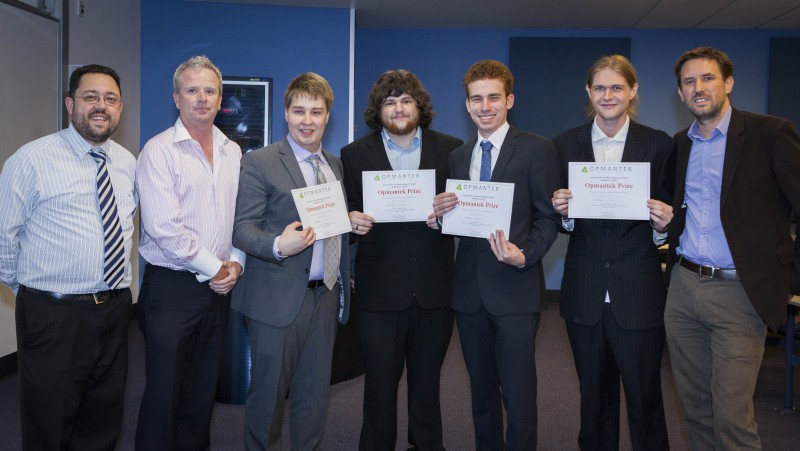We might be living longer than ever before, but the Australian government’s plan to keep older people in the workforce may not be that easy.
The predictions are that by 2055 the nation will have a population of 39.7 million people with the number of people aged 65 and over expected to double, a testament to healthier lifestyles and medical science.
Ageing populations are expensive, though. To offset the rising costs, governments are encouraging healthy older people to postpone retirement and keep working, at least until their 70s, and perhaps beyond.
Dr David Tuffley will be presenting a public lecture on this topic at the Brisbane Square Library, June 11. Find out more.
But jobs are not easy to come by these days. Youth unemployment in Australia is 4.5 times higher than the general rate, so keeping older workers in their jobs will not be helping to reduce youth unemployment.
As the machines take over
Also contributing to the scarcity of jobs is the rising trend of intelligent machines replacing human workers.
An Oxford University study published in 2013 found that 47% of jobs in the United States could be computerised within two decades. Transport, logistics and office roles were most likely to come under threat, the study authors found.
Robots will also do jobs that humans do not want to do; repetitive jobs, tedious jobs, unpleasant ones like emptying bed-pans in hospitals and so on.
Automation will create new categories of jobs. This is good news for younger workers who may be perceived by employers as being more willing and able to learn new skills.
As if employment prospects are not bleak enough, the technology of 3D printing is maturing rapidly. A team at Monash University have printed two fully functional jet engines. Such breakthroughs are becoming more common.
The implications of this new technology amount to another industrial revolution, with all of the corresponding impacts this will have on people working in industries such as manufacturing and logistics, to mention only two.
Goods that are currently made en masse in factories and transported over long distances to the consumer will increasingly be made locally (even in space), on-demand and at relatively low cost. A sustainable approach to making things.
Given what’s already possible with 3D printing, perhaps in five to ten years this technology will be mature enough to make almost anything.
Even the building industry will come under pressure. In China, industrial scale printers are producing rows of houses and apartments out of recycled materials in a matter of days.
Policy solutions
For every problem, there is a solution. Although some problems are so complex that they qualify as a “wicked problem”. This is what faces policy makers trying to solve the problem of falling employment and rising social welfare costs.
We need programs that allow the unemployed of any age to re-skill for the jobs that are available now and in the future. An essential part of this re-skilling should be to teach innovation-oriented thinking and willingness to embrace change, or at least the futility of resisting it.
One low-hanging fruit approach for governments everywhere is to unlock more of the value contained in Open Data. This is data, such as demographic and economic data, collected by governments and others that is freely available for anyone to create value from in ways limited only by their imagination.
So how much value is there in this open data? Globally, the McKinsey & Company consultancy group estimates a staggering US$3 trillion annually.
The previous Newman-government in Queensland recognised the value in its open data in “job creation”.
Globally, the release of data has driven innovation, growth and job creation by the private sector, and directly benefited the community.
Think globally, act locally
Community-level enterprises could use local people and resources to produce goods and services that are marketed to the whole world using the powerful enabler of internet technology. Open data, either at a local or state level, is just one possibility for community entrepreneurs.
With small enterprise-friendly government policies, regional communities could unlock more of their unique potential, creating prosperity in the process. This would be great for the long-term survival of many shrinking regional communities.
In the face of all these pressures, it would be difficult not to conclude that economies at national and international levels are going to need restructuring if they are to continue to function. Accessing some of the employment potential and the trillions of dollars contained in open data is a good place to start, but there is much more to be done.
The advent of 3D printing, rising automation, older workers competing with younger ones – these factors are creating a widening credibility gap that somehow it will all work out for the best.
X-prize thinking
There is no doubt that we face big challenges as we go forward into the 21st century. But we humans are an adaptable species. We have dealt with bigger survival challenges than how to restructure our economies to create employment in an age of automation.
As Peter Diamandis of the X-Prize Foundation points out, at no time in our history have we had the power of exponential technology plus the connected minds of billions of people around the world with which to solve these grand challenges.
It is the people with the drive and imagination to make good use of these tools who will lead us into the future.![]()
AUTHOR
David Tuffley
Lecturer in Applied Ethics and Socio-Technical Studies, School of ICT, at Griffith University






